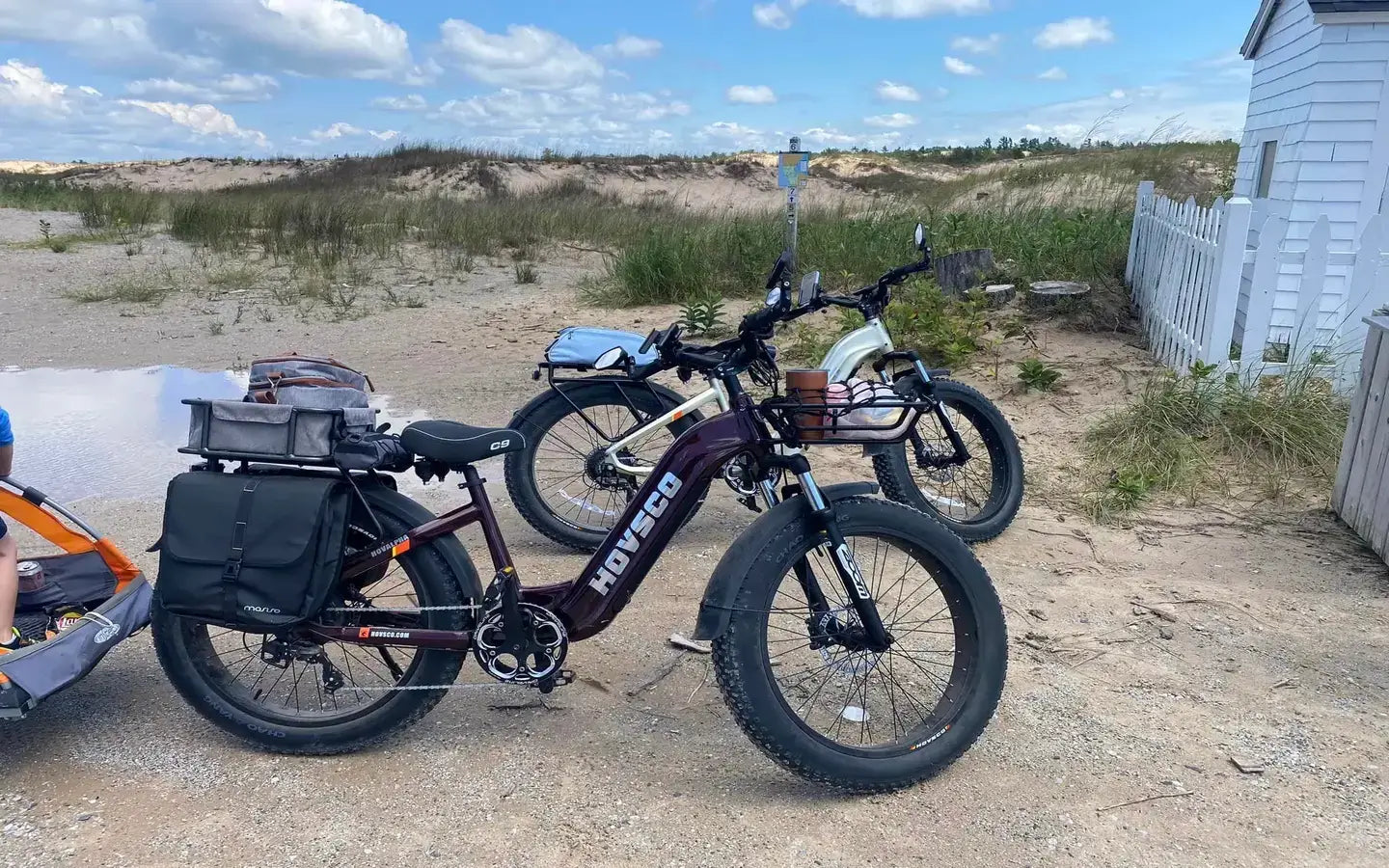
- by LiuJiazhu
Which Electric Bikes Offer the Longest Range for Cross-Country Touring Adventures?
- by LiuJiazhu
Electric bikes with the longest range for cross-country touring include the Tailg Leopard Super Edition (656.8 km), Yadea Guaneng C50 (240 km), and Ninebot E-Scooter (230 km). These models combine advanced battery tech (e.g., graphene, sodium-ion), energy recovery systems, and aerodynamic designs to maximize distance. Hydraulic brakes, durable frames, and modular charging solutions further enhance reliability for long adventures. How Durable Are HOVSCO Electric Mountain Bikes?
An e-bike’s touring range hinges on battery capacity, motor efficiency, and terrain adaptability. High-capacity lithium or graphene batteries (e.g., 72V35Ah) paired with regenerative braking systems can extend range by 15-20%. Motor power (800W+) must balance torque and energy consumption, while lightweight frames reduce drag.
Pro Tip: Opt for bikes with modular battery packs to swap cells during rides. For example, the Tailg Leopard uses a 72V52Ah lithium battery with cloud-based energy management, achieving 656 km under optimal conditions. However, steep inclines or headwinds can slash range by 30%, emphasizing the need for adaptive power modes. Consider this analogy: A touring e-bike’s range is like a fuel-efficient car—superior engineering minimizes waste but can’t defy physics.
Graphene and sodium-ion batteries dominate long-range e-bikes. Yadea’s TTFAR graphene 3.0 batteries retain 85% capacity after 1,000 cycles, while sodium-ion cells (e.g., Ji Na 1.0) offer faster charging (-20°C to 55°C tolerance). Energy density matters: 24Ah graphene batteries deliver 20% more range than standard lithium.
| Technology | Cycle Life | Charging Time |
|---|---|---|
| Graphene | 1,200 cycles | 4-6 hrs |
| Sodium-Ion | 3,000 cycles | 1.5-3 hrs |
Warning: Never mix battery chemistries—using incompatible chargers can cause thermal runaway. The Ninebot E-Scooter’s EABS system recovers 10% energy during braking, effectively adding 15-20 km per charge. But what if you’re touring in subzero temperatures? Sodium-ion’s cold resistance makes it ideal for alpine routes, whereas graphene excels in urban heat.
Mid-drive motors (e.g., Bosch Performance Line CX) outperform hub motors in efficiency, especially on hills. A 750W motor with 120Nm torque can climb 20% grades while consuming 25% less power than a 1,000W hub motor. Look for bikes with torque sensors that adjust output based on pedal force, like the Yadea T7-200’s TTFAR 2.0 system.
Pro Tip: Avoid constant throttle use—it drains batteries 40% faster than pedal-assist modes. The Tailg Leopard’s cloud-powered motor optimizes energy flow between battery and wheels, akin to a hybrid car’s transmission. Yet, motor choice isn’t one-size-fits-all. For flat terrains, a 500W hub motor suffices, but mountain passes demand 750W+ mid-drives.
Portable solar chargers (100-200W) and dual-battery systems are game-changers. The AIMA Long-Ranger supports dual 72V32Ah batteries for 450 km, while foldable solar panels add 50-80 km daily. Fast-charging tech (e.g., 2-hour full charge) is critical—Ninebot’s HyperCharger refills 80% in 1 hour.
| Solution | Range Added | Weight |
|---|---|---|
| Solar Charger | 50-80 km/day | 3.5 kg |
| Spare Battery | 150-200 km | 8-10 kg |
Practically speaking, a cross-country rider might combine both: daytime solar charging and overnight battery swaps. But remember, solar efficiency drops 30% in cloudy weather. Always carry a universal charger compatible with RV parks or EV stations.
Streamlined frames and pannier positioning can boost range by 12-18%. The Yadea Guaneng C50’s teardrop-shaped frame reduces drag coefficient to 0.28, comparable to road bikes. Load distribution matters: rear panniers increase wind resistance by 20% versus frame-mounted bags.
Pro Tip: Use a handlebar fairing to deflect headwinds. For instance, the Tailg Leopard’s integrated cargo rack lowers the center of gravity, minimizing turbulence. Think of it as cycling behind a semi-truck—smart drafting saves energy. However, bulky accessories (e.g., child seats) can negate these gains. Prioritize minimalism for maximum miles.
Monthly battery calibration and tire pressure checks are essential. Under-inflated tires (below 45 PSI) increase rolling resistance, cutting range by 10-15%. Hydraulic brake maintenance prevents drag—misaligned pads can sap 5% efficiency.
Yes, if the voltage matches your motor system. Consult manufacturers to ensure compatibility and warranty compliance.
How accurate are e-bike range estimates?Most estimates assume ideal conditions (25°C, flat terrain). Real-world range is typically 20-30% lower—plan accordingly.
Are solar chargers practical for rainy regions?Partially. Pair them with fast-charging batteries and prioritize charging during sunny intervals.
Share:
What Are The Best Long-Range Electric Bikes With High-Capacity Batteries?
Are Lightweight Full Suspension eBike Frames Ideal for Long-Distance Touring?